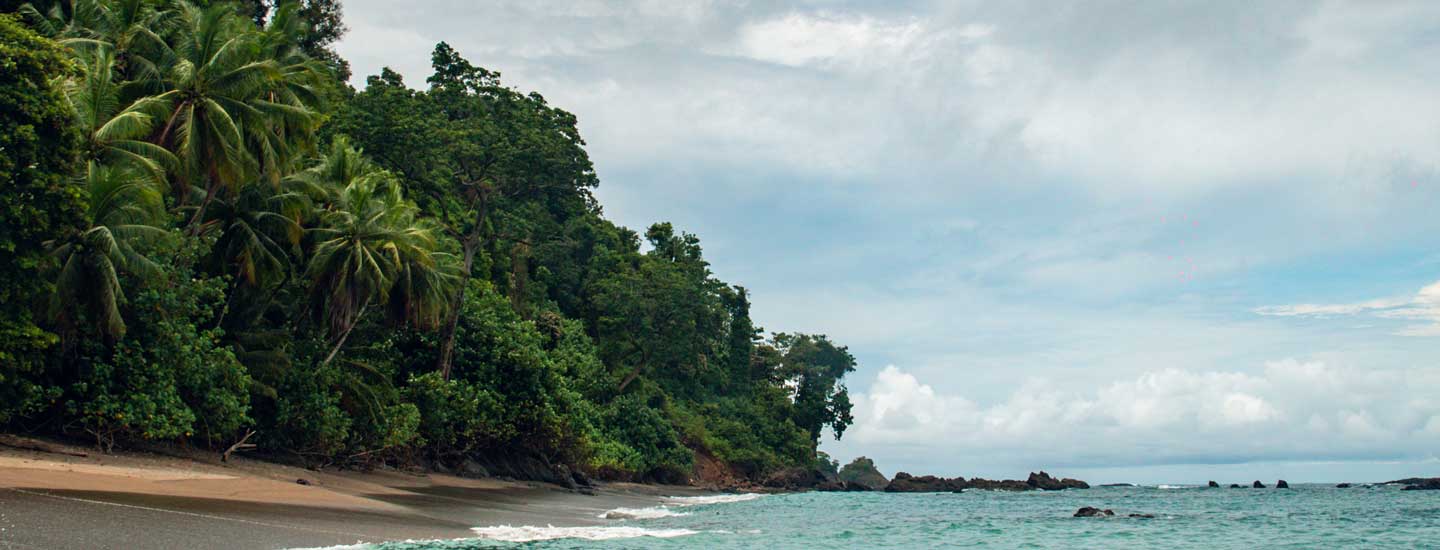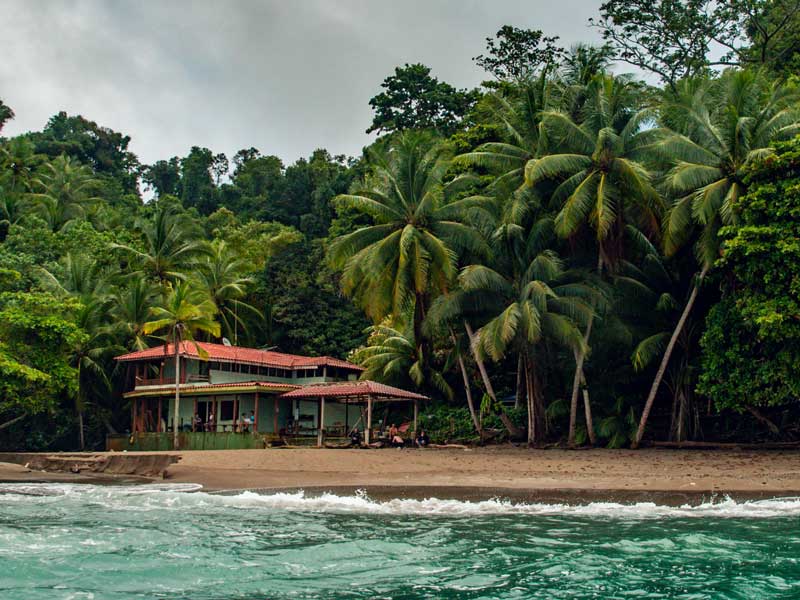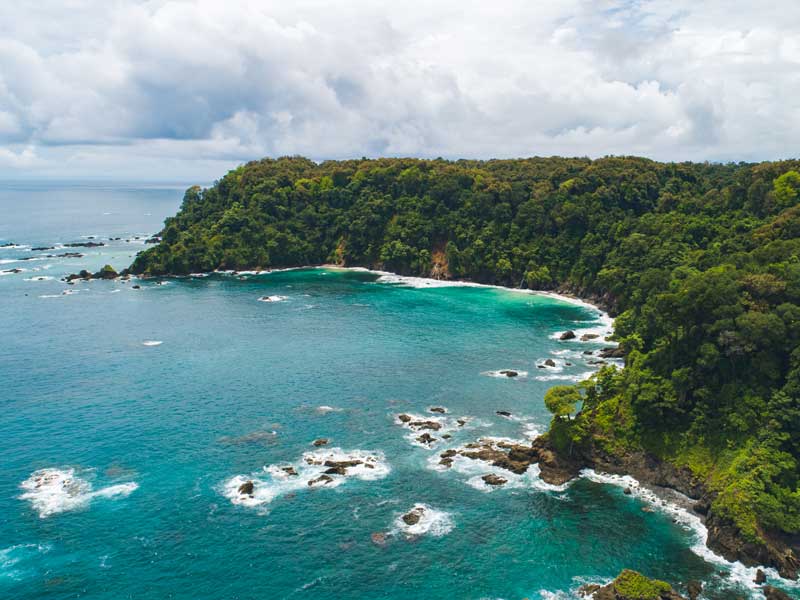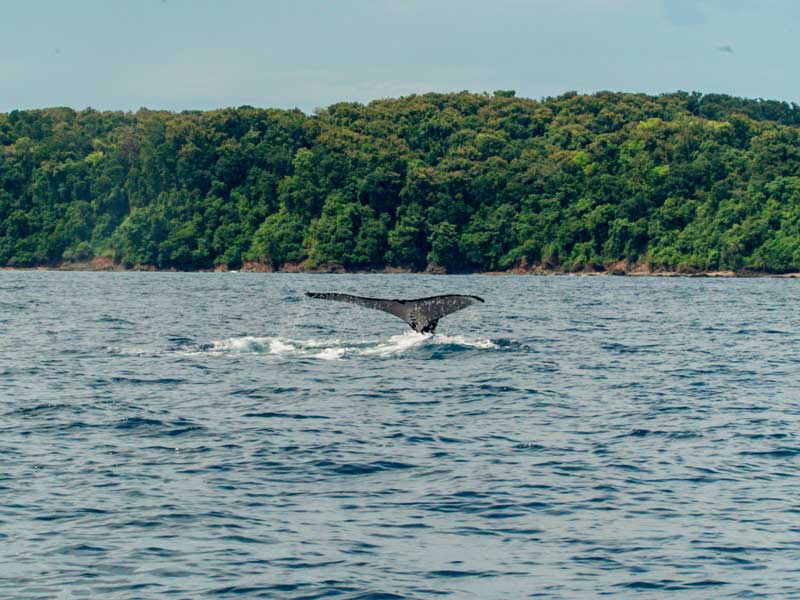
The wonderful Isla del Caño
Isla del Caño is a biological reserve located in the Pacific region of the country, about 16bkm northwest of the Osa Peninsula, Puntarenas.
Isla del Caño covers 320 hectares of land and 5,800 hectares of sea. It has one of the most extensive and healthiest coral formations on the Pacific Coast of Costa Rica. In fact, the reserve contains five coral platforms that range from 0.8 to 4.2 hectares in size.
Here you will find the ruins of stone spheres that were created by pre-Columbian civilizations. The island was occupied by several peoples. It is believed that between 700 and 1500 BC the island was used as a cemetery by the Chiriquis, or as a permanent residence for the Quepos or Brunca peoples.
The reserve is a breeding site for humpback whales from both the northern and southern hemispheres, as well as a resident species of dolphins.
Land of whales and dolphins
Between the months of July and October, humpback whales migrate from the Southern Hemisphere (Patagonia) to the Central and South Pacific, travelling more than 8000 km. Whales from the north arrive on our coasts around December. All of these whales come to our warm waters to mate or to give birth.
The beaches are sandy and rocky, without mangroves. The higher-altitude areas contain pristine tropical rainforest and stands of secondary forest of distinct ages. The reserve contains 158 identified plant species in its forests.
On the island you can see ferns, heliconias, vines, herbaceous plants and some introduced species such as cashew, guava, bananas, mango and oranges.
Wildlife is scarce but you can find bees and butterflies, as well as amphibians, reptiles, and resident and migratory birds.

Wealth in the depths
The true treasure of Isla del Caño is hidden in its depths, so if you are planning a visit, get ready to experience an incredible underwater adventure. Sea turtles, rays, dolphins, moray eels, barracudas, sharks, humpback whales, tuna, and other aquatic species are a regular sight.
Since Isla del Caño is a biological reserve, the number of divers is regulated. Also, tourists are not allowed to take any of the marine life out of the reserve, either alive or dead.
You can organize to the reserve from Dominical, Drake Bay, Uvita and Sierpe. There are several companies located near the Ballena Marine National Park that offer tours.

What to bring?
Trash bags or dry bags to keep the items in your backpack dry, and to pack your trash afterwards. Do not forget to bring bottled water, sunglasses, insect repellent, fresh clothes and a camera.
Number of people who can be on the island per day: 200 people (100 people in the morning and 100 in the afternoon)
Operating hours:7:00 am – 11:00 am and 11:00 am – 3:00 pm
Admission price:
- Costa Ricans: ¢ 1,600
- Foreigners: $15
- Foreign Child (2 to 12 years old): $5
- Costa Rican Child (2 to 12 years old): ¢500
- Diving $4 (tour operator price is separate)

Rules on the island:
- All fishing is prohibited.
- Campfires are prohibited.
- It is forbidden to throw waste in the sea or land area of the reserve. It is forbidden to wash boats or change boat oil.
- The consumption of liquor, smoking or any taking class of psychotropic drugs is prohibited.
- You are not allowed to stay overnight in the land and marine area of the reserve.
- Please do not stray from the designated paths.
- It is prohibited to eat foods on the reserve or to have a picnic.
- Do not feed, touch, or harass the wild animals.
- Bathing in the rivers is prohibited.
- Recreational diving is allowed only in the areas designated for diving, which are marked by buoys.
- A maximum of ten people can be in the designated diving area at the same time.
- All guided tours must be conducted on the trails designated for public use and be accompanied by a certified guide.
- A maximum of 20 people can be on the trails at the same time.
- Drone pilots must carry the respective Costa Rican civil aviation license.
- Boats must not drop anchor within 200m of the Operating Center.
- Other restrictions are detailed in decree 40700-MINAE and the National Parks Law
- If you do not comply with these rules you are liable to be removed from the reserve and reported to the appropriate authorities
